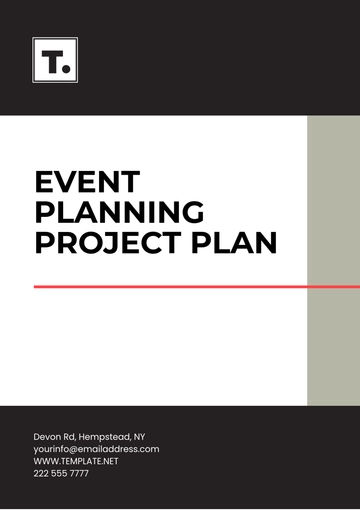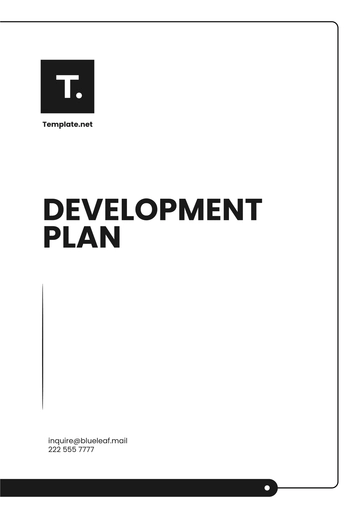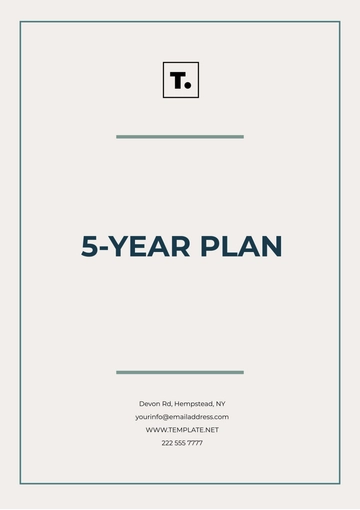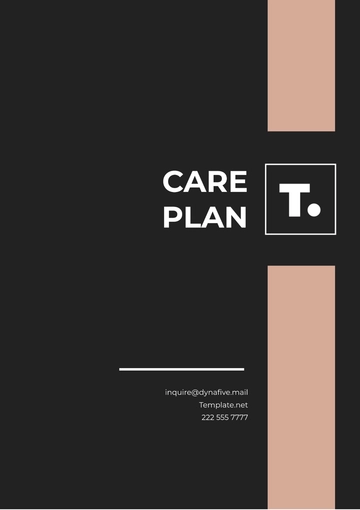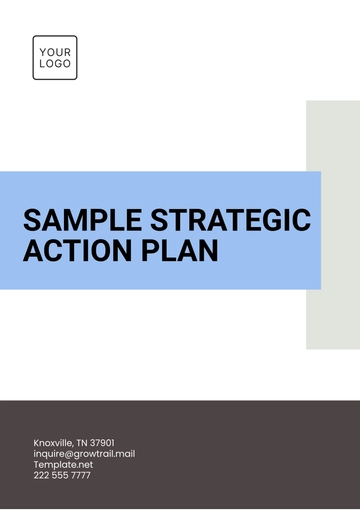Free Workplace Detailed Incident Plan
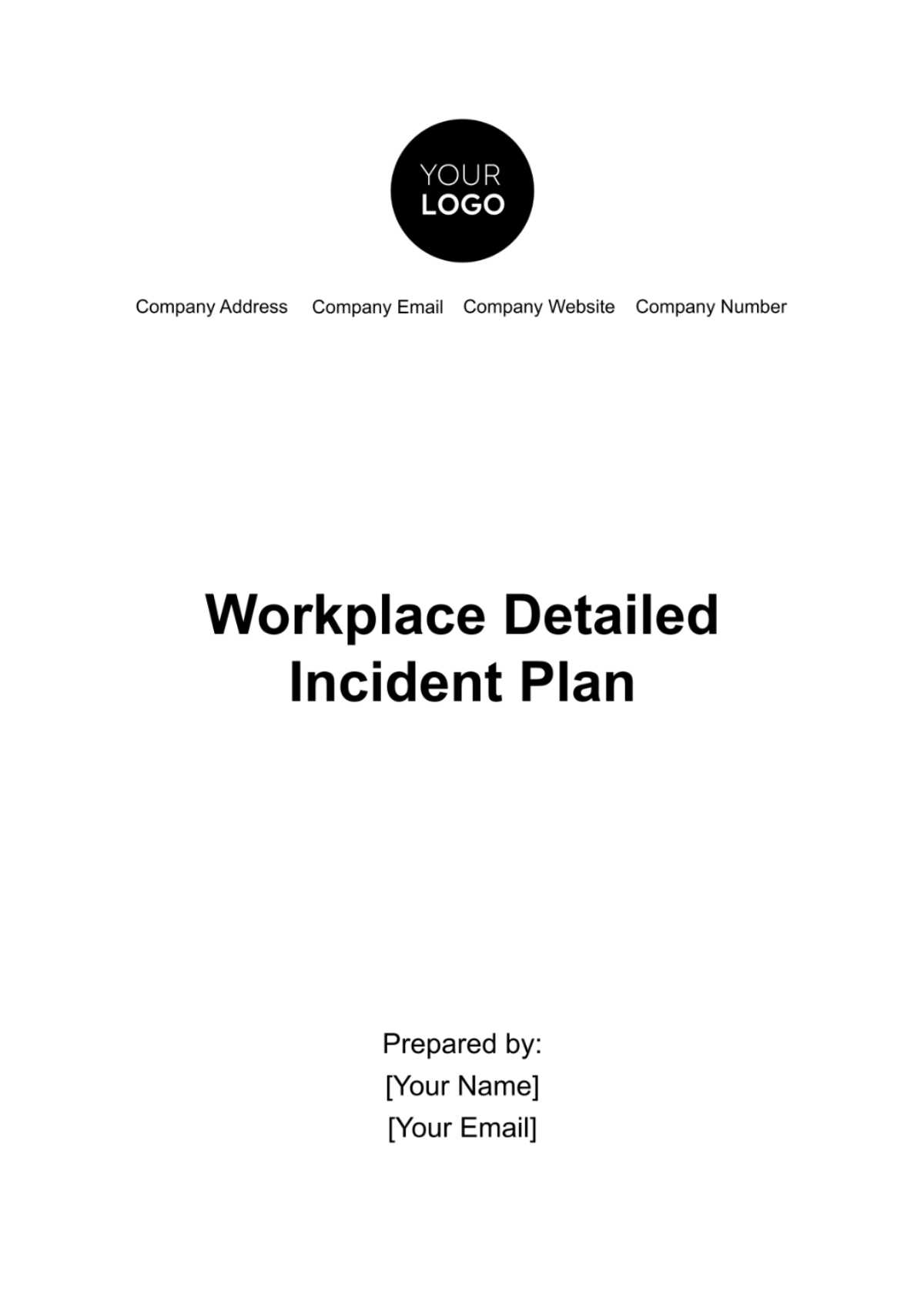
I. Incident Response Overview
Purpose: | The primary objective of this plan is to establish a cohesive and effective response to any workplace incident, thereby ensuring the safety and well-being of all employees, minimizing property damage, and ensuring quick resumption of normal operations. |
Scope: | The plan applies to a wide range of potential workplace incidents, from minor accidents to major emergencies. It encompasses scenarios that may require immediate medical attention, evacuation, or involve hazardous materials, thereby necessitating a versatile and adaptive response. |
Types of Incidents Covered: |
|
II. Incident Response Team
The effectiveness of the incident response team hinges on its composition, with members from various departments contributing their expertise. This table outlines the roles and responsibilities of each team member, ensuring a well-rounded and capable response unit.
Team Composition and Responsibilities
Role | Responsibilities | Contact Information |
Safety Officer | Leads the response, assesses risks, and makes critical decisions. | Primary: [Number] Secondary: [Number] |
HR Representative | Manages employee impact, support, and communication. | Primary: [Number] Secondary: [Number] |
IT Specialist | Addresses technology-related incidents, ensures data integrity. | Primary: [Number] Secondary: [Number] |
Facilities Manager | Manages infrastructure and equipment, oversees repairs. | Primary: [Number] Secondary: [Number] |
First Aid Responders | Provides immediate medical assistance, coordinates with healthcare providers. | Primary: [Number] Secondary: [Number] |
III. Impact Assessment
Prompt identification and accurate reporting of incidents are essential for activating the correct response measures. This section defines the criteria for identifying incidents and outlines the structured procedures for reporting them.
A. Identification Criteria
To ensure incidents are quickly and correctly identified, specific criteria are established. This aids in determining the severity and required response for each situation.
Incident Type | Identification Criteria |
Injury or Health Incident | Any situation resulting in injury or potential health risk to employees or visitors. |
Property Damage | Damage to company property or equipment that impacts operations or poses a safety risk. |
Environmental Incident | Any release of hazardous substances or environmental damage. |
Security Breach | Unauthorized access, data breach, or other security threats. |
B. Reporting Procedures
Efficient reporting procedures are crucial for a timely and coordinated response to incidents.
Reporting Step | Action Required | Responsible Party |
Immediate Verbal Report | Report incident immediately to supervisor or safety officer. | Witness/Involved Employee |
Written Report Submission | Submit a detailed written report using the standard form within 24 hours of the incident. | Witness/Involved Employee |
Incident Reporting Tools | Utilize available digital platforms for efficient incident reporting and documentation. | All Employees |
C. Written Report Submission
The incident reporting form should capture critical details of the incident for a comprehensive understanding and record.
Form Section | Details to Include |
Incident Details | Date, time, location, description of the incident. |
Involved Parties | Names and roles of all involved individuals. |
Witness Accounts | Statements from witnesses, if available. |
Immediate Actions Taken | First aid provided, containment measures, notifications made. |
Additional Information | Any other relevant information or observations. |
IV. Immediate Response Actions
The effectiveness of the initial response to an incident is critical in mitigating its impact. This section delineates the guidelines for immediate action steps to be taken in various scenarios, ensuring a rapid and effective response.
A. Initial Response Protocols
Immediate action protocols are vital in the initial moments following an incident. These steps are designed to ensure safety, contain hazards, and provide necessary care.
Action Type | Protocol Details | Responsible Party |
Evacuation | Follow predefined evacuation routes to designated assembly points. Ensure all areas are cleared methodically. | Safety Officer, Team Leads |
First Aid | Administer first aid to injured individuals. Use first aid kits and AEDs as needed. Contact medical services for serious injuries. | First Aid Responders |
Hazard Containment | Contain spills or leaks using spill kits. Isolate fire sources and use fire extinguishers if safe to do so. | Safety Officer, Maintenance Team |
B. Emergency Contact and Coordination
Coordinating effectively both internally and with external emergency services is crucial for a comprehensive response to the incident.
Coordination Type | Action Steps | Responsible Party |
Internal Coordination | Communicate the nature and severity of the incident to the incident response team and all employees. | Safety Officer, HR Representative |
External Emergency Services | Contact external emergency services immediately in case of severe incidents. Provide clear details about the incident. | Safety Officer, Designated Emergency Contact |
C. Emergency Equipment and Supplies Checklist
Having the right equipment and supplies on hand is essential for an effective immediate response.
Equipment/ Supply | Location | Checks/Maintenance |
First Aid Kits | Located in all major areas, including office spaces, warehouse, and entry points. | Checked and restocked monthly. |
Fire Extinguishers | Strategically placed throughout the facility. | Inspected regularly. |
Spill Containment Kits | Available in areas prone to chemical or hazardous spills. | Inspected and replenished as needed. |
V. Resource Allocation and Management
Efficient resource management is a cornerstone of effective incident response. This section details the processes for maintaining an inventory of critical resources, along with strategies for their allocation and management during incidents.
A. Resource Inventory
Maintaining an up-to-date inventory of resources is essential for immediate and effective response to any incident.
Resource Category | Items Included | Location(s) | Regular Checks |
Emergency Equipment | Fire extinguishers, spill kits, safety barriers. | Various locations throughout the workplace. | Monthly inspections and after each use. |
Medical Supplies | First aid kits, AEDs, medical response bags. | Strategic points like common areas, near high-risk zones. | Quarterly restocking and checks. |
Communication Devices | Walkie-talkies, emergency alert systems, public address systems. | Security office, reception, key personnel offices. | Bi-monthly functional tests. |
B. Resource Allocation Strategies
Effective allocation strategies ensure that resources are utilized efficiently during incidents.
Allocation Strategy | Description | Implementation Plan |
Prioritization Based on Severity | Critical incidents receive priority in resource allocation. | Incident severity assessed by Safety Officer, resources directed accordingly. |
Accessibility and Distribution | Resources are easily accessible across the workplace. | Regularly review and adjust the placement of resources to ensure coverage of all areas. |
Resource Management Team | Dedicated team to manage and deploy resources. | Comprised of members from safety, facilities, and HR departments. Coordinated by the Safety Officer. |
C. Resource Management Team Responsibilities
A specialized team ensures continuous oversight and management of resources.
Responsibility | Details |
Regular Audits | Conduct audits to ensure all resources are in place and functional. |
Post-Incident Replenishment | Restock and repair resources used during an incident. |
Continuous Improvement | Gather feedback and make improvements to resource allocation and accessibility. |
VI. Communication Plan
Effective communication is vital in incident management. This section outlines strategies for maintaining clear and timely communication both within the organization and with external parties.
Internal Communication:
A. Immediate Incident Alert: Mechanisms for quickly disseminating information about the incident to all employees, including alerts via intercom, email, or specialized notification systems.
B. Ongoing Updates: Regular updates to keep employees informed about the status of the incident, actions taken, and any necessary instructions or precautions.
C. Post-Incident Communication: Debriefings and communications post-incident to inform employees about the outcomes, any continuing risks, and steps taken to prevent future incidents.
External Communication:
A. Media Relations: Protocols for handling media inquiries, ensuring information released is accurate and does not compromise privacy or legal standing.
B. Public Statements: Guidelines for crafting public statements, designating spokespersons, and timing of releases to the public and other stakeholders.
Prepared by:
[Your Name]
[Your Job Title]
[Your Company Name]
© [Year] [Your Company Name]. All Rights Reserved.
- 100% Customizable, free editor
- Access 1 Million+ Templates, photo’s & graphics
- Download or share as a template
- Click and replace photos, graphics, text, backgrounds
- Resize, crop, AI write & more
- Access advanced editor
Prepare your organization for workplace incidents with Template.net's Workplace Detailed Incident Plan Template. This indispensable tool readies your team for various incident scenarios, ensuring readiness and enhancing incident response capabilities. Tailored for emergency planners, use this template to develop a thorough incident response plan, bolstering your organization's ability to handle emergencies effectively and minimize their impact.
You may also like
- Finance Plan
- Construction Plan
- Sales Plan
- Development Plan
- Career Plan
- Budget Plan
- HR Plan
- Education Plan
- Transition Plan
- Work Plan
- Training Plan
- Communication Plan
- Operation Plan
- Health And Safety Plan
- Strategy Plan
- Professional Development Plan
- Advertising Plan
- Risk Management Plan
- Restaurant Plan
- School Plan
- Nursing Home Patient Care Plan
- Nursing Care Plan
- Plan Event
- Startup Plan
- Social Media Plan
- Staffing Plan
- Annual Plan
- Content Plan
- Payment Plan
- Implementation Plan
- Hotel Plan
- Workout Plan
- Accounting Plan
- Campaign Plan
- Essay Plan
- 30 60 90 Day Plan
- Research Plan
- Recruitment Plan
- 90 Day Plan
- Quarterly Plan
- Emergency Plan
- 5 Year Plan
- Gym Plan
- Personal Plan
- IT and Software Plan
- Treatment Plan
- Real Estate Plan
- Law Firm Plan
- Healthcare Plan
- Improvement Plan
- Media Plan
- 5 Year Business Plan
- Learning Plan
- Marketing Campaign Plan
- Travel Agency Plan
- Cleaning Services Plan
- Interior Design Plan
- Performance Plan
- PR Plan
- Birth Plan
- Life Plan
- SEO Plan
- Disaster Recovery Plan
- Continuity Plan
- Launch Plan
- Legal Plan
- Behavior Plan
- Performance Improvement Plan
- Salon Plan
- Security Plan
- Security Management Plan
- Employee Development Plan
- Quality Plan
- Service Improvement Plan
- Growth Plan
- Incident Response Plan
- Basketball Plan
- Emergency Action Plan
- Product Launch Plan
- Spa Plan
- Employee Training Plan
- Data Analysis Plan
- Employee Action Plan
- Territory Plan
- Audit Plan
- Classroom Plan
- Activity Plan
- Parenting Plan
- Care Plan
- Project Execution Plan
- Exercise Plan
- Internship Plan
- Software Development Plan
- Continuous Improvement Plan
- Leave Plan
- 90 Day Sales Plan
- Advertising Agency Plan
- Employee Transition Plan
- Smart Action Plan
- Workplace Safety Plan
- Behavior Change Plan
- Contingency Plan
- Continuity of Operations Plan
- Health Plan
- Quality Control Plan
- Self Plan
- Sports Development Plan
- Change Management Plan
- Ecommerce Plan
- Personal Financial Plan
- Process Improvement Plan
- 30-60-90 Day Sales Plan
- Crisis Management Plan
- Engagement Plan
- Execution Plan
- Pandemic Plan
- Quality Assurance Plan
- Service Continuity Plan
- Agile Project Plan
- Fundraising Plan
- Job Transition Plan
- Asset Maintenance Plan
- Maintenance Plan
- Software Test Plan
- Staff Training and Development Plan
- 3 Year Plan
- Brand Activation Plan
- Release Plan
- Resource Plan
- Risk Mitigation Plan
- Teacher Plan
- 30 60 90 Day Plan for New Manager
- Food Safety Plan
- Food Truck Plan
- Hiring Plan
- Quality Management Plan
- Wellness Plan
- Behavior Intervention Plan
- Bonus Plan
- Investment Plan
- Maternity Leave Plan
- Pandemic Response Plan
- Succession Planning
- Coaching Plan
- Configuration Management Plan
- Remote Work Plan
- Self Care Plan
- Teaching Plan
- 100-Day Plan
- HACCP Plan
- Student Plan
- Sustainability Plan
- 30 60 90 Day Plan for Interview
- Access Plan
- Site Specific Safety Plan







